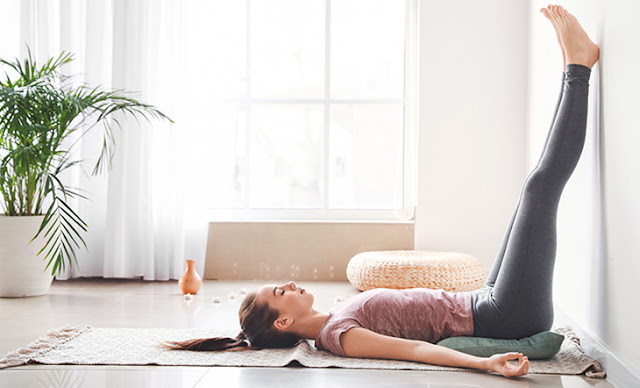If you don't have the will to exercise at home, why don't you stretch? Healthline, a U.S. health information website, introduced "Legs Up the Wall," an easy-to-follow action at home.
Legs Up The Wall?
Legs Up the Wall is a movement of yoga. In order to take action properly, you must first place a folded towel where the floor and the wall meet. Sit on a towel and lie on the floor, then finally keep the back of the bridge parallel to the wall and the floor. With the strength loosened on the knee, the legs must gently touch the wall to relax the muscles.
It is good to keep the posture for 5 ~ 20 minutes. If you are not flexible, take the towel under the tail bone and take the posture. At this time, close your eyes and breathe slowly and gently.
"What is the Effect of Legs Up the Wall?"
- Stress Reduction
When stressed, our bodies release adrenaline, which increases the heart and breathing. At this time, yoga movements can help. Studies have shown that yoga is an effective way to reduce stress by stimulating the parasympathetic nervous system and calming the sympathetic nervous system. Keeping the yoga move "Legs Up the Wall" with slow breathing reduces stress, including increased oxygen absorption, muscle relaxation, and slower heart rate, and can make positive changes to the body.
- Back Pain Relief
Modern people who have a lot of sitting time live with back pain. Sitting for a long time is a posture with considerable pressure on the waist. If the posture is not right, pain occurs in the back, and if the pain persists, back-related diseases can occur. Taking the Legs Up the Wall posture can reduce the pressure on the waist to alleviate pain or discomfort.
- Blood Circulation
Raising the leg higher than the heart reduces the pressure in the leg veins and helps improve blood flow circulation. Smooth blood circulation is effective in reducing leg swelling by helping discharge waste. However, if you keep your posture too long, it can interfere with the flow of blood flow, so it is better not to exceed 90 degrees and it is most effective to do it for 5 ~ 20 minutes.

Comments
Post a Comment